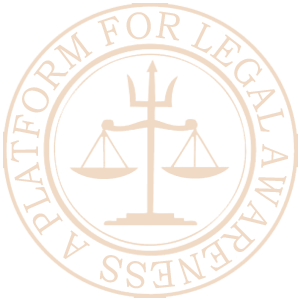The Ministry of Civil Aviation is responsible for formulating national policies and regulations for civil aviation in India. It has attached and autonomous organisations like DGCA, BCAS, and AAI overseas.
Vision
Their vision is to become one of the top-performing aviation hubs globally. They also want to achieve significant growth in domestic and international passenger traffic.
Mission
Their mission is to create a supportive policy environment that fosters the growth of the aviation sector. They also want to make air travel affordable and accessible to the masses through initiatives like the Regional Connectivity Scheme (UDAN). They want to stimulate competition among airlines to improve services and reduce fares. Wish to leverage India's growing economy and rising incomes to propel the aviation sector forward.
Directorate General of Civil Aviation (DGCA)
The Directorate General of Civil Aviation (DGCA) is India's primary regulatory authority for civil aviation, providing safe and efficient air travel. It is responsible for everything from pilot licenses to airport certification, safety regulations, and incident investigations. The DGCA collaborates with the International Civil Aviation Organisation (ICAO) to keep India in line with global aviation standards.
DGCA's Key Roles
i. Aircraft Safety and Certification: Registers and certifies civil aircraft, ensuring their airworthiness.
ii. Pilot and Engineer Licensing: Aviation staff are licensed after completing tough exams.
iii. Operational oversight: issuing air operator certificates and monitoring air service providers.
iv. Accident Prevention and Investigation: Investigates incidents and enforces safety measures.
v. Environmental compliance: managing aircraft noise and emissions while sticking to environmental requirements.
An Overview of India's Aviation Journey
i. 1953: The government nationalises airlines, which creates a state monopoly.
ii. 1990: The Open-Sky Policy gave air taxi operators greater freedom.
iii. 1994: Private airlines emerge, ending the governmental monopoly and increasing competition.
Today, private and low-cost carriers dominate, making air travel affordable.
As India's aviation industry evolves, DGCA promotes safe, sustainable, and cheap air travel, ensuring that Indian skies remain secure and accessible to all.
Other Important Organizations
i. Bureau of Civil Aviation Security (BCAS): Ensures security standards at Indian airports.
ii. Airports Authority of India (AAI): AAI manages and develops international and domestic airports in India and oversees air traffic control and airspace management.
iii. Airports Economic Regulatory Authority of India (AERA): Regulates tariffs and charges at major airports.
iv. Aircraft Accident Investigation Bureau (AAIB): Investigates aviation accidents and incidents.
v. Commission of Railway Safety (CRS): Oversees safety in railway operations (under MoCA).
vi. Pawan Hans Helicopters Limited (PHHL): Provides helicopter services for various sectors.
vii. AI Assets Holding Limited (AIAHL): Holds assets of Air India and its subsidiaries.
viii. Rajiv Gandhi National Aviation University (RGNAU): India's first national university dedicated to aviation education.
The Financial Management Structure within India's Ministry of Civil Aviation (Moca).
Chief Financial Controller (CFC):
i. Receipts and Payments: Manages timely payments, revenue collection, and claim settlements, including pensions and provident funds.
ii. Retirement Benefits: Authorizes and disburses pensions, gratuities, and provident fund payments.
iii. Accounting: Compiles monthly and annual accounts, ensures banking efficiency and adheres to accounting standards.
iv. Financial Reporting: Provides regular reports to the Controller General of Accounts (CGA), ensuring accessible and accurate financial data.
v. Compliance and Risk Audits: Assess internal controls, monitor budget risks, evaluate service efficiency, and maintain a system for prompt corrections.
Principal Accounts Office (PAO):
a. Serves MoCA and the Ministry of Tourism.
b. Consolidates financial accounts received from regional PAOs.
c. Submits monthly and annual accounts to the CGA.
d. Prepares various financial reports, including Appropriation Accounts and statements.
Pay and Accounts Offices (PAOs):
i. Located in Delhi, Mumbai, Kolkata, and Chennai.
ii. Handle day-to-day financial transactions for MoCA.
Functions include:
a. Verifying and processing bills for payment.
b. Maintaining records of government loans, advances, and employee benefits.
c. Authorising pensions and other retirement benefits.
d. Issuing credit for authorised expenditures.
Overall Structure:
i. The CFC leads the financial management team.
ii. PAO is a central point for consolidating accounts from regional PAOs.
iii. Regional PAOs handle day-to-day transactions for their respective locations.
iv. All entities work together to ensure proper financial management within MoCA.
Source:
https://www.civilaviation.gov.in/
Disclaimer: Kindly note that the views and opinions expressed are of the author(s), not Law Colloquy.

 An Overview.png)